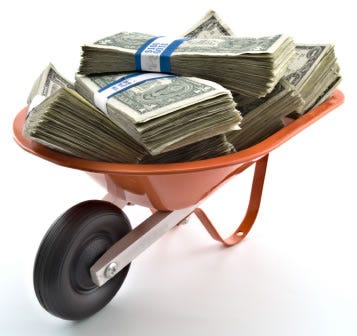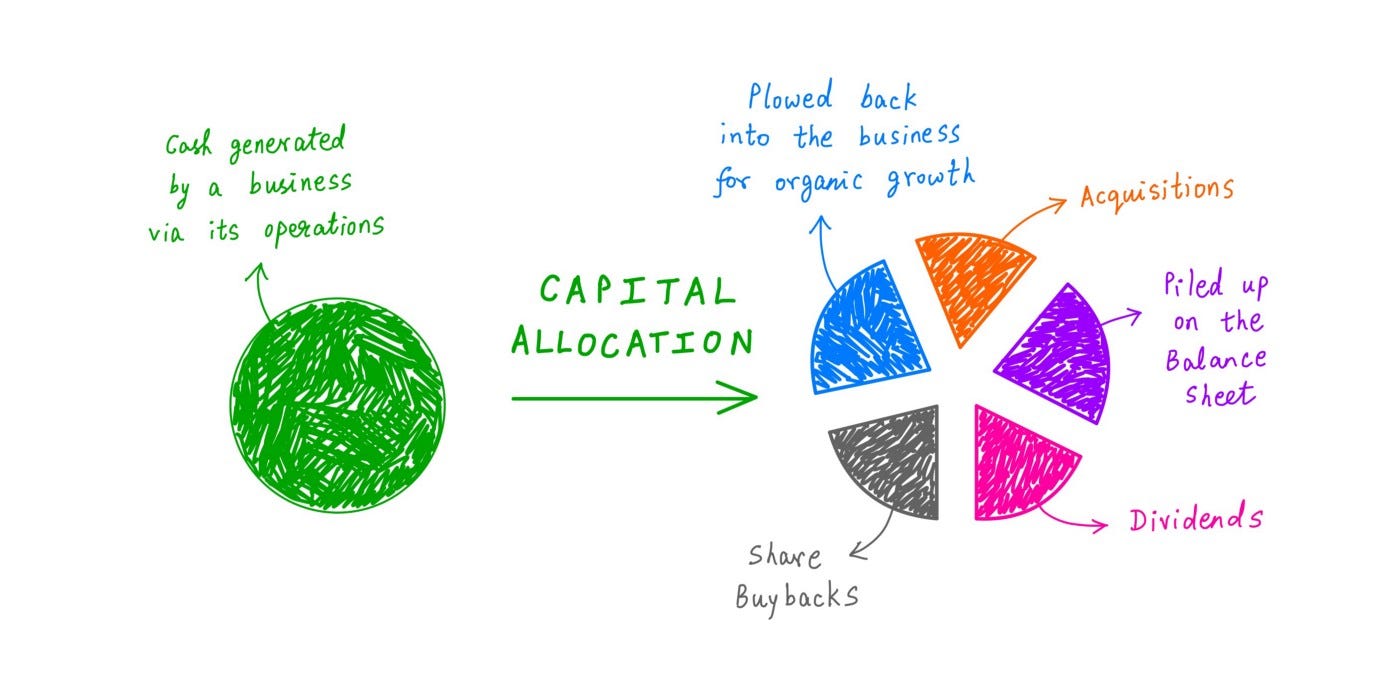Principles of Coffee Can Portfolio Selection
How to construct a portfolio that will survive the test of time
A core part of coffee can investing is to select quality companies that can withstand the test of time and offer superior results over the time frame of your coffee can portfolio. In order to do so, I found it easy to follow a set of simple principles:
1) Identify a starting ticker count
Use a relatively high number of stocks that offers enough diversification. The number should be big enough that the permanent loss of capital in any one company should not let you lose sleep overnight. For me, that number was around 50 - i.e. losing 2% of my investment (assuming equal weighted exposure) wasn’t going to cause me to fret too much.
While 50 is a large enough number to prevent you from losing too much due to one single failure, it is not large enough that you can’t track them, or manage your portfolio, during the course of your coffee can portfolio. It is also a small enough number that in case I need to add a few during the course of my coffee can portfolio journey, I can add a few securities and not feel too unwieldy. I suppose a starting size of between 20-50 could all be worthwhile.
2) Diversification
Diversify across as many attributes as the risk you perceive that could affect your portfolio. For me, I considered multiple risks - country, industry, currency exposures, stability of policy and governance, evolution of addressable markets (growing/shrinking) and wanted to diversify across all of these.
What does this mean in practice? The idea is to spread your investments across enough countries, enough industries and enough currency exposures that the final product looks like a resilient mix of economic activity generators such that risk is well spread out. This doesn’t mean risk will be equal (or 0) - it only means there are trade-offs that you are happy to live with. For instance, I started with a 36% exposure to US - which is lower than the 50% US represented in many global indexes, but high enough that I can capture the returns from superior American businesses.
There is no need for every penny of your allocation to be in stocks only. Choose allocations for commodities (like Gold) or bonds, but whatever you add, you must be comfortable to adhere with the principles of coffee can investing, which is to stay invested through your committed time period. Don’t add gold to your portfolio today so you can trade it for something else later. That would defeat the purpose of starting a coffee can portfolio in the first place.
Do what you can live with for 10 years. If you start with that principle, the right decision won’t be too difficult.
3) Profitability
I look for profitable companies, not just today, but have a consistent track record of profitability over long periods of time. When companies are burning cash, I don’t know whether they will ever turn profitable. I also don’t know whether my shareholding will be diluted by the company when they need to raise cash. I would much rather leave the investment into loss-making companies into the hands of the professionals - Venture Capital and Private Equity Investors. I stick to owning a slice of profitable companies.
I also avoid investing in companies that are turning around at the moment. Vast majority of companies in the world fail in the long run. Companies that survive are the healthiest ones, not just because they are healthy today, but their management and internal culture give them resilience. This significant reduces the chances of decay setting in - not that it can’t happen, but the signal you get from past consistency is a pretty strong one.
4) Capital Allocation Strategies
I like dividends, so vast majority of my holdings are dividend paying companies, but I don’t optimise just for high dividend yield - I am happy to hold companies with small yields when I know they are going to be able to grow their dividend over time.
Companies I hold don’t have to be paying dividends at all. Some find ways by using their free cashflow in reducing their share count by buying back share, while other put it to profit accretive acquisitions. The companies I like most are the ones who are using retained profits from today to compound the profits they generate in the future. This might be difficult to assess when you look at a single snapshot of a company, but becomes apparent as you look at their historical record. Regardless of which way the company chooses to allocate capital, I look for companies that look to do so soundly and in a manner I feel will benefit me as a shareholder in the long run.
However, I will admit that figuring out which companies are allocating capital well becomes tougher in the absence of a clear signal, like dividend. Dividend record is often the easiest way that the company is doing something simple - if the company is generating increasing dividend over long periods of time, you can be rest assured that their capital allocation isn’t grossly incorrect.
Summary
Coffee Can Investing requires the investor to stay invested for long periods of time in their investments. This relies on ensuring that an investor selects high quality assets. The work needed to get this right will take time the first time you do it. Let it be - it will save you tonnes of time in the future cycles of work.
One way to decrease your up front allocation is to only invest in one stock at a time. If you spend an hour on a company and you like it, add it to your portfolio. Then take a break for a week or so and come back to doing this again. In a few weeks, your portfolio will start taking shape and you can think about what to add to make the portfolio more diversified and robust.
Start small, scale slowly. Remember, you aren’t running a sprint, but a marathon. Slow starts won’t take away much in the long run.
In the next post, I will talk about my own coffee can portfolio. How I set about doing it and what I looked for.
This substack has it’s own Twitter account now - @coffeecaninvstr - subscribe to receive short form content related to coffee can investing, or sounds investing in general.






What platform would you recommend for investing in stocks in South-East Asian markets (e.g. Indonesia, Thailand, Vietnam), and African countries?